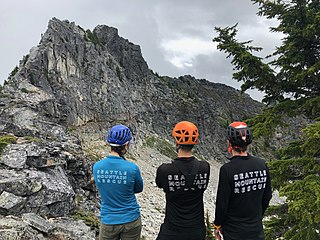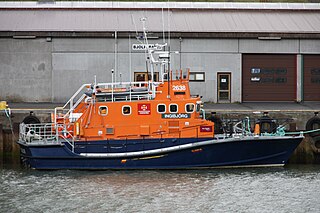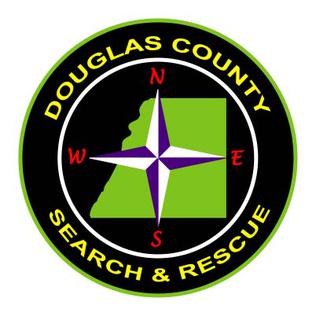
Search and rescue (SAR) is the search for and provision of aid to people who are in distress or imminent danger. The general field of search and rescue includes many specialty sub-fields, typically determined by the type of terrain the search is conducted over. These include mountain rescue; ground search and rescue, including the use of search and rescue dogs; urban search and rescue in cities; combat search and rescue on the battlefield and air-sea rescue over water.

Mountain rescue refers to search and rescue activities that occur in a mountainous environment, although the term is sometimes also used to apply to search and rescue in other wilderness environments. This tends to include mountains with technical rope access issues, snow, avalanches, ice, crevasses, glaciers, alpine environments and high altitudes. The difficult and remote nature of the terrain in which mountain rescue often occurs has resulted in the development of a number of specific pieces of equipment and techniques. Helicopters are often used to quickly extract casualties, and search dogs may be deployed to find a casualty.

The National Search and Rescue Program (NSP) is the name given by the Government of Canada to the collective search and rescue (SAR) activities in Canada. Until 2015, the NSP was administered by the National Search and Rescue Secretariat (NSS).

The Fire and Rescue Department of Malaysia, commonly known as Bomba, is a federal agency of Malaysia responsible for firefighting and technical rescue. Bomba is a Malay word derived from the Portuguese bombeiros which means 'firefighters'.

A FEMA Urban Search and Rescue Task Force is a team of individuals specializing in urban search and rescue, disaster recovery, and emergency triage and medicine. The teams are deployed to emergency and disaster sites within six hours of notification. The Federal Emergency Management Agency (FEMA) created the Task Force concept to provide support for large scale disasters in the United States. FEMA provides financial, technical and training support for the Task Forces as well as creating and verifying the standards of Task Force personnel and equipment.

The Fairfax County Fire and Rescue Department is a combination career and volunteer organization that provides fire suppression services, emergency medical response services, technical rescue services, hazardous materials Response services, water rescue services, life safety education, fire prevention and arson investigation services to Fairfax County, Virginia. Emergency medical services include advanced life support response by ALS capable engines and transport units.

The Virginia Beach Fire Department (VBFD) provides fire protection and emergency medical services to the city of Virginia Beach, Virginia. The department protects an area of 249 square miles (640 km2) as well as 59 square miles (150 km2) of inland waterways and 38 miles (61 km) of shoreline. The independent city is home to a population of 450,882, not including the summer population growth due to tourism, making it the most populous city in Virginia and the 39th largest city in the United States.

Urban Search and Rescue Missouri Task Force 1 (MO-TF1) is a FEMA Urban Search and Rescue Task Force based in Boone County, Missouri. The task force is sponsored by the Boone County Fire Protection District and is designated as the Weapons of Mass Destruction (WMD) Response Team for the state of Missouri.

Urban Search and Rescue Virginia Task Force 1 or VA-TF1 is a FEMA Urban Search and Rescue Task Force based in Fairfax County, Virginia. VA-TF1 is sponsored by the Fairfax County Fire and Rescue Department.

Mountain rescue services in England and Wales operate under the association of Mountain Rescue England and Wales (MREW), formerly called Mountain Rescue Council of England & Wales. The association has a number of regional mountain rescue teams, each of which is an independent charity. The team members are highly trained volunteers who are called out by the police.

Mounted search and rescue (MSAR) is a specialty within search and rescue (SAR), using horses as search partners and for transportation to search for missing persons. SAR responders on horseback are primarily a search resource, but also can provide off-road logistics support and transportation. Mounted SAR responders can in some terrains move faster on the ground than a human on foot, can transport more equipment, and may be physically less exhausted than a SAR responder performing the same task on foot. Mounted SAR responders typically have longer initial response times than groundpounder SAR resources, due to the time required to pick up trailer, horse(s), and perhaps also water, feed, and equipment.

Multnomah County Sheriff's Office Search and Rescue is a non-profit volunteer search and rescue resource for the Multnomah County Sheriff's Office in Multnomah County, Oregon, United States. The agency also offers its 3,000-5,000 hours of volunteer service to other areas, including Clackamas, Columbia, Washington, Marion, Hood River, Wasco, Tillamook, and Clatsop counties in Oregon, and Skamania and Clark counties in Washington. The organization was first created in 1961 in cooperation with the Boy Scouts of America, and is one of the longest continually used Explorer Search and Rescue units in the United States. In 1986, sponsorship of the MCSO SAR was transferred to the Multnomah County Sheriff's Office. MCSO SAR is part of the Mount Hood Search and Rescue Council. MCSO receives funding from the Department of Homeland Security within the Urban Area Security Initiative (UASI) to create a regional resource.
In the United States, mountain rescue is handled by professional teams within some national parks and by volunteer teams elsewhere. Volunteer teams are often members of the Mountain Rescue Association (MRA).

Seattle Mountain Rescue (SMR) is an all volunteer non-profit mountain rescue team operating out of King County, Washington. SMR is part of the King County Search & Rescue Association (KCSARA) and is also part of the Mountain Rescue Association, frequently working with other King County SAR teams as well as neighboring mountain rescue teams, including Everett Mountain Rescue, Tacoma Mountain Rescue, and Olympic Mountain Rescue.

Slysavarnarfélagið Landsbjörg or the Icelandic Association for Search and Rescue (ICE-SAR) is a national association of rescue units and accident prevention divisions. Its member organizations consist of 99 rescue units, 70 accident prevention and women's divisions and 50 youth sections. Altogether the association has about 10,000 volunteer members and are present in most towns. Although the rescue teams function as a kind of public service, they are not supported or paid for by the government but by donation.

Marin County Search and Rescue is an all-volunteer organization in Marin County within Marin County Sheriff's Office. With approximately sixty active members, Marin County's Search and Rescue responds to searches for missing children and adults, evidence and other search requests in the county and on mutual aid calls anywhere in the state of California. Marin SAR is a mountain rescue Type I team with the motto of: "Anytime, Anywhere, Any Weather."

Surrey Search and Rescue (SurSAR) is a lowland search and rescue team based in Surrey, United Kingdom, who respond for missing person search, water rescue, drone imaging and other taskings at the request of Surrey Police and Surrey Fire and Rescue Service, as well as other statutory and government agencies. In common with most UKSAR teams, SurSAR's members are volunteers. The team has been a registered charity in England and Wales since October 2011.

Douglas County Search and Rescue is an all-volunteer organization in Douglas County within Douglas County Sheriff's Office. With approximately sixty active members year-round, Douglas County's Search and Rescue responds to searches for missing children and adults, evidence and other search requests in the county and on mutual aid calls anywhere in the state of Colorado. Douglas SAR is a mountain rescue Type I certified team able to handle the toughest terrain and remain out in the field without resupply for extended periods.

The Blacksburg Volunteer Rescue Squad was established in 1950 as an all-volunteer EMS agency providing free service to a community of approximately 55,000 residents, including approximately half of Montgomery County, Virginia, and the Town of Blacksburg, which is home to Virginia Tech. The squad has approximately 120 members, including full-time community residents with other jobs and high school and college students.


















